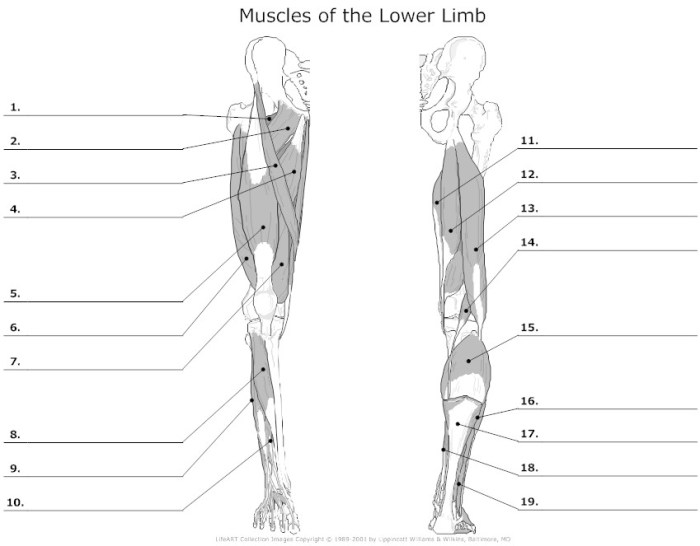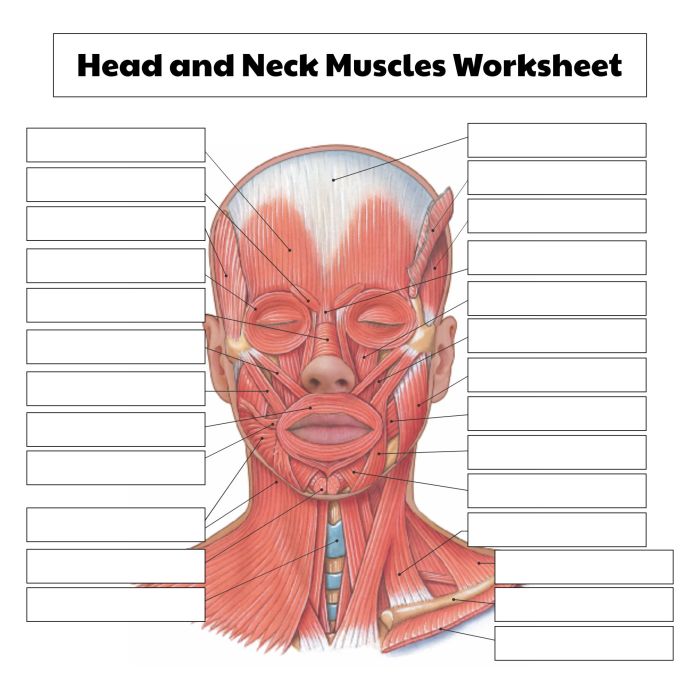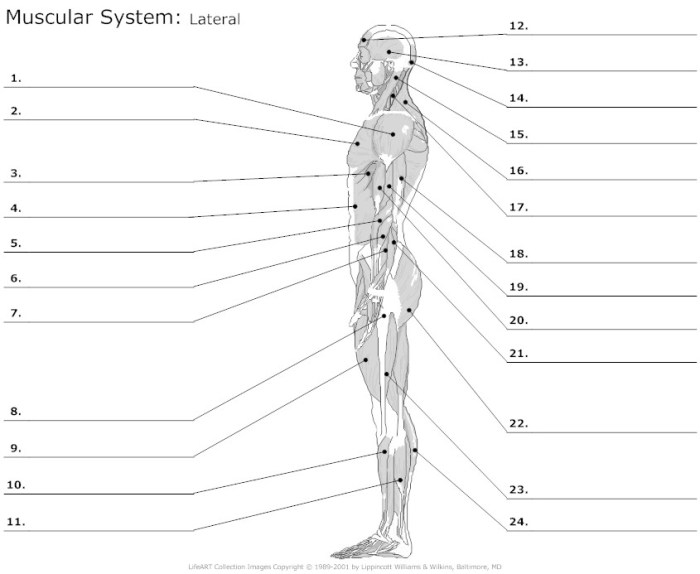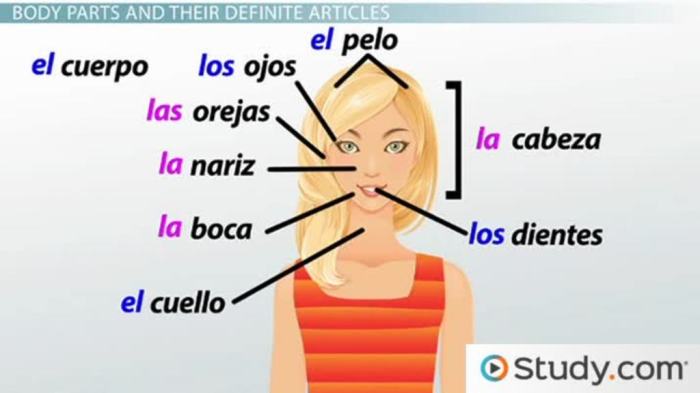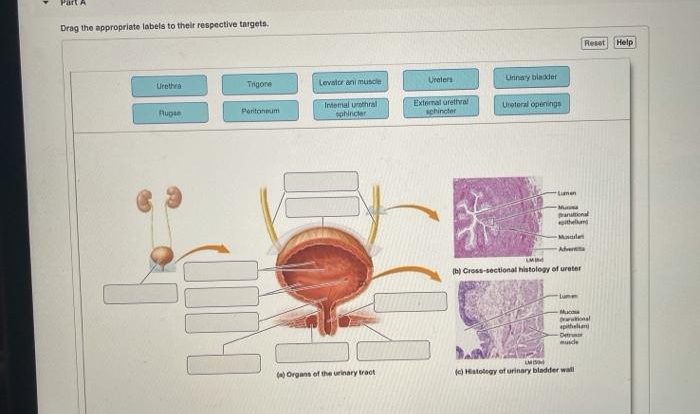Muscle labeling worksheet with answers – Welcome to the realm of muscle labeling worksheets with answers, where the intricacies of human anatomy are unveiled. This comprehensive guide delves into the significance, types, and applications of muscle labeling worksheets, empowering educators and learners alike with the tools to master muscular anatomy.
Muscle labeling worksheets with answers serve as invaluable resources for students, providing a structured and interactive approach to learning muscle names, locations, and functions. These worksheets facilitate a deeper understanding of the musculoskeletal system, laying the foundation for effective rehabilitation, fitness training, and medical practice.
Muscle Labeling Worksheet with Answers
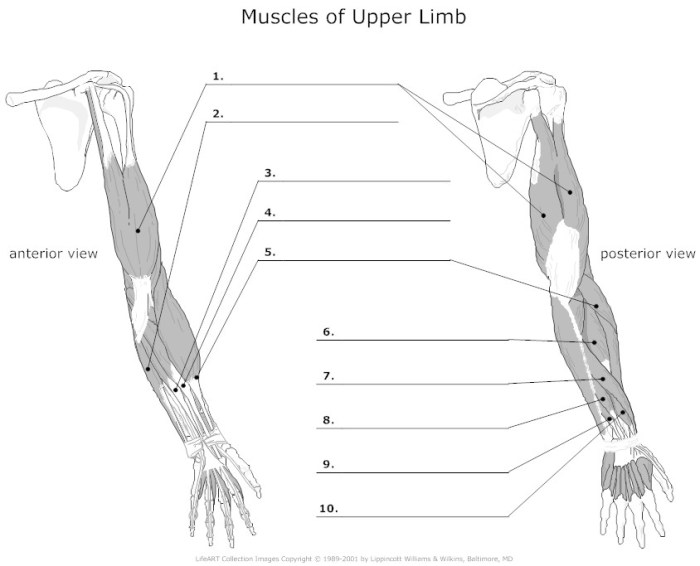
A muscle labeling worksheet is a valuable tool for students learning about human anatomy. It provides a structured and interactive way to identify and label different muscles, enhancing their understanding of muscle structure and function.
Muscle labeling worksheets can be used in various educational settings, including classrooms, labs, and independent study. They are particularly beneficial for students who are new to anatomy or who need additional support in visualizing and understanding muscle anatomy.
Importance of Accurate Muscle Labeling, Muscle labeling worksheet with answers
Accurate muscle labeling is crucial for effective learning because it helps students:
- Develop a strong foundation in anatomical terminology.
- Gain a clear understanding of muscle location and orientation.
- Identify muscles involved in specific movements and functions.
- Prepare for advanced studies in anatomy, physiology, and kinesiology.
Types of Muscle Labeling Worksheets
There are several types of muscle labeling worksheets available, each with its own advantages and disadvantages:
- Blank worksheetsprovide an empty template for students to fill in the muscle names. These worksheets are suitable for students who have a basic understanding of muscle anatomy and are looking to reinforce their knowledge.
- Partially labeled worksheetsinclude some pre-labeled muscles, while others are left blank. These worksheets are a good option for students who need additional guidance or support in identifying muscles.
- Interactive worksheetsuse digital platforms or software to provide students with a more engaging and interactive experience. These worksheets may include features such as zoom, rotate, and quiz modes, making them particularly useful for visual learners.
Creating a Muscle Labeling Worksheet
To create a muscle labeling worksheet, follow these steps:
- Select appropriate muscles to label.Choose muscles that are relevant to the specific topic or area of study.
- Design the worksheet for clarity and effectiveness.Use clear fonts, diagrams, and instructions. Consider using color-coding or anatomical landmarks to guide students.
- Provide answer key.Include a separate answer key with the correct muscle labels to facilitate self-assessment and reinforce learning.
FAQ Overview
What are the benefits of using muscle labeling worksheets with answers?
Muscle labeling worksheets with answers provide numerous benefits, including improved muscle identification, enhanced anatomical knowledge, increased understanding of muscle function, and improved preparation for medical or fitness-related careers.
How can I create an effective muscle labeling worksheet?
To create an effective muscle labeling worksheet, select appropriate muscles to label, design the worksheet for clarity and effectiveness, and consider incorporating images or diagrams for visual reference.
What are the different types of muscle labeling worksheets available?
Muscle labeling worksheets come in various types, including blank worksheets, partially labeled worksheets, and interactive worksheets. Each type offers unique advantages and disadvantages, depending on the learning objectives and target audience.
